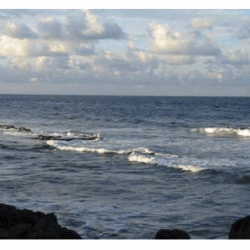Source Institutions
Source Institutions
Add to list Go to activity
Activity link broken? See if it's at the internet archive

In this three-part activity, learners explore how waves are formed and why some waves are bigger than others. First, learners observe waves of water in a pan generated by an electric fan. Learners predict how the waves will change at low, medium, and high settings and compare their predictions to their observations. Then, learners drop a toothpick in the pan and turn on the fan to simulate how water particles spin in the direction of the wind. In the final activity, learners create a beach model to study wave size and patterns. This detailed lesson plan includes reflection questions, extension/simplification suggestions, web resources, and a blackline master.
- Under 5 minutes
- 45 to 60 minutes
- $10 - $20 per group of students
- Ages 8 - 11
- Activity, Lesson/Lesson Plan, Model, Simulation
- English
Quick Guide
Materials List (per group of students)
- 1 shallow, rectangular tray or pan (2-3 inches deep and at least 14 inches long) – preferably a glass baking dish or another see- through container
- 1 gallon jug of water
- 1 electric desk fan (with low, medium and high settings)
- 1 small bag of rocks or sand
- Catch a Wave handout
- Handful of toothpicks
- Pens or pencils
- Globe or world map
- Blue food coloring (optional)
- 5 large marbles (optional)
- Some water sounds or surf rock music (optional)
Subjects
-
Earth and Space Science
-
Earth Processes
- Weather and Climate
-
Earth Structure
- Oceans and Water
- Atmosphere
-
Earth Processes
-
Mathematics
-
Data Analysis and Probability
- Data Analysis
- Data Collection
- Data Representation
-
Data Analysis and Probability
-
Physical Sciences
- Energy
-
States of Matter
- Liquids
-
Vibration and Waves
- Wave Properties
- Wave Motion
-
The Nature of Science
-
The Scientific Process
- Conducting Investigations
- Gathering Data
- Formulating Explanations
- Communicating Results
-
The Scientific Process
Informal Categories
- Model Building
- Nature and Environment
Audience
To use this activity, learners need to:
- see
- read
- touch
Learning styles supported:
- Involves teamwork and communication skills
- Involves hands-on or lab activities
Other
Components that are part of this resource:
Includes alignment to state and/or national standards:
This resource is part of:
Access Rights:
- Free access
By:
- Daniels, Eve ; Dunham, Trudy
Rights:
- All rights reserved, Board of Regents of the University of Wisconsin System, 2008
